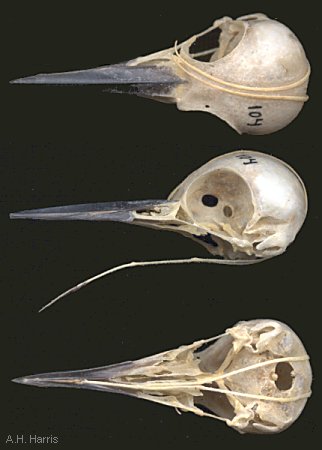

Almost everyone knows about woodpeckers and how they drill holes in tree trunks with their bills to snatch up wood-boring insects. Some members of the woodpecker family do things differently, though.
One member common in our desert area is the Red-shafted Flicker.
Although it excavates a nesting cavity in trees like other woodpeckers, you'll
commonly see this bird on the ground, foraging on ants or other terrestrial
invertebrates rather than using its bill to uncover goodies tucked away in tree trunks
or limbs. Even more surprising to most folks are the sapsuckers. Whereas most
woodpeckers have a long, sharp tongue with backward-pointing barbs to spear their prey
and drag them from their wooden tunnels, the sapsucker's tongue ends in a brush.
They excavate a hole into a tree trunk to intercept sap, with their tongue acting as a
sponge for the nutritious moisture. Insects attracted to the sweet sap supply needed
proteins. The woodpeckers demonstrate a principle common among living things—a
basic makeup varied for a variety of functions. What biologists and musicians call
"variations on a theme".

Contributor: Arthur H. Harris, Laboratory for Environmental Biology, Centennial Museum, University of Texas at El Paso.
Desert Diary is a joint production of the Centennial Museum and KTEP National Public Radio at the University of Texas at El Paso.

Dorsal, lateral, and ventral views of the skull of a Hairy Woodpecker. In this species, part of the supporting structure of the tongue the hyoid apparatus) encircles the skull in the adult, ending up at the right nostril. In the top view, the horns of the hyoid extend from near the right nostril across the top of the skull. The long, slender structure below the skull in the lateral view is the support of the tongue proper as well as more posterior parts of the hyoid, portions of which can be seen coming over the skull. In the bottom view, the two supports can be seen to come together to form the anterior tongue support. Scanned images from a specimen in the UTEP collections.
Bock, W. J. 1999. Functional and evolutionary morphology of woodpeckers. The Ostrich, 70:23-31.
Welty, J. C. 1982. The life of birds. 3rd ed., Saunders College Publishing, Philadelphia. 754 pp.
Anatomy and Evolution of the Woodpecker's Tongue by Rusty Ryan.